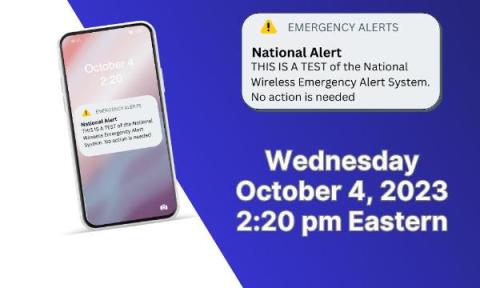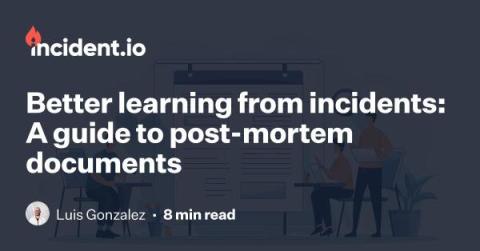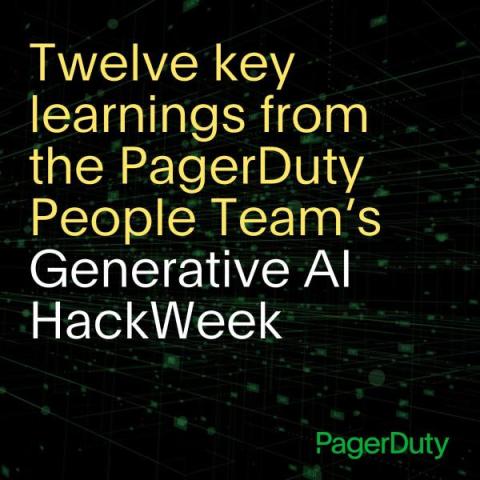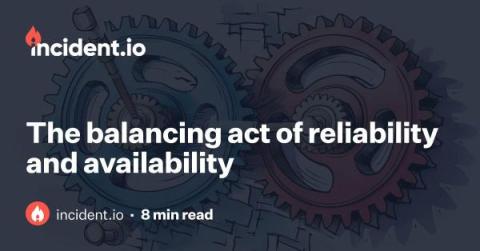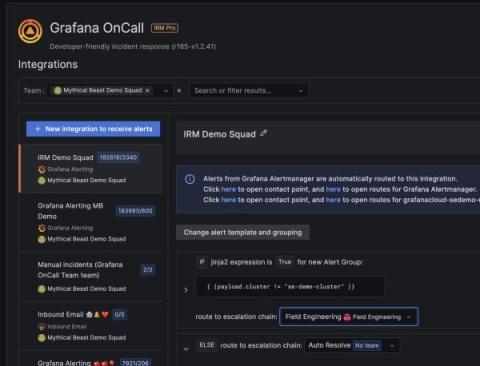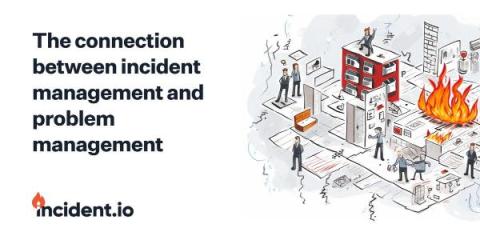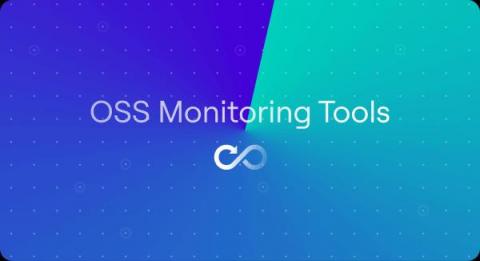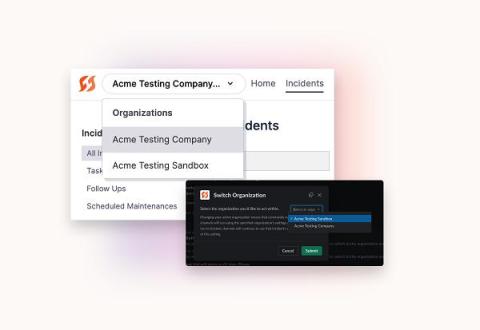Operations | Monitoring | ITSM | DevOps | Cloud
September 2023
Observability Pillars: Exploring Logs, Metrics and Traces
Alternatives to SMS alerts
While SMS alerts are handy, they also tend to be tricky. Across 120+ countries, we continuously deal with compliances & regulations from Vendors, Government, and Phone carrier companies. Other alert channels similar to SMS are a lot less cumbersome with higher delivery rates. Let’s take a look at the available options to switch from SMS.
How incident.io enables the confidence to declare more incidents
How incident.io's intuitive UI is great for non-technical responders
How WorkOS has benefitted from incident.io's high-quality support
Blameless Announces New Google Docs and Google Drive Integration to Help Engineering Teams Enhance Their Incident Management and Retrospectives
Unveiling Past Incidents: Accelerating Incident Resolution with Historical Context
Introducing Grafana OnCall shift swaps: A simpler way to exchange on-call shifts with teammates
A family member’s birthday, that concert you’ve waited all year to see, an impromptu weekend getaway with friends — there are a lot of reasons software engineers might want to switch on-call shifts. And rather than have to frantically send Slack messages to your teammates, wouldn’t it be nice to automate the process and quickly find the coverage you need?
Product Spotlight: Enhancing Incident Resolution with Blameless' Microsoft Teams Integration
The importance of testing emergency warning systems
Better learning from incidents: A guide to incident post-mortem documents
If you’re just starting out in the world of incident response, then you’ve probably come across the phrase “post-mortem” at least once or twice. And if you’re a seasoned incident responder, the phrase probably invokes mixed feelings. Just to clarify, here, we’re talking about post-mortem documents, not meetings. It’s a distinction we have to make since lots of teams use the phrase to refer to the meeting they have after an incident.
Status Pages 101: Everything You Need to Know About Status Pages
Status Pages are critical for effective Incident Management. Just as an ill-structured On-Call Schedule can wreak havoc, ineffective Status Pages can leave customers and stakeholders, adrift, underscoring the need for a meticulous approach. Here are two, Matsuri Japon, a Non-Profit Organization and Sport1, a premier live-stream sports content platform, both integrate Squadcast Status Pages to enhance their incident response strategies discreetly. You may read about them later. Crafting these Status Pages demands precision, offering dynamic updates and collaboration.
Why automated Root Cause Analysis matters for driving down MTTR
Finding the root causes of IT anomalies can be challenging, but the rewards are worth it. By identifying the root cause or causes of an incident or critical failure, response teams can resolve incidents faster and determine the best steps to avoid having them recur. This can drive down both the frequency of service interruptions and their duration.
Clouds, caches and connection conundrums
We recently moved our infrastructure fully into Google Cloud. Most things went very smoothly, but there was one issue we came across last week that just wouldn’t stop cropping up. What follows is a tale of rabbit holes, red herrings, table flips and (eventually) a very satisfying smoking gun. Grab a cuppa, and strap in. Our journey starts, fittingly, with an incident getting declared... 💥🚨
Accelerate change alert discovery and incident resolution with Root Cause Changes
Today, the majority of organizations operate under a hybrid cloud structure. Due to this, operations are consistently met with daily infrastructure and software changes and updates, which are also the primary cause of incidents and outages. Long gone are the days when a tech stack could be represented by a single dependency model. Microservices, CI/CD, and containers across multi-cloud make it extremely difficult to track all the changes and connect them to incidents.
The Ultimate Guide to DORA Metrics for DevOps
In the world of software delivery, organizations are under constant pressure to improve their performance and deliver high-quality software to their customers. One effective way to measure and optimize software delivery performance is to use the DORA (DevOps Research and Assessment) metrics. DORA metrics, developed by a renowned research team at DORA, provide valuable insights into the effectiveness of an organization's software delivery processes.
How we've made Status Pages better over the last three months
A few months ago we announced Status Pages – the most delightful way to keep customers up-to-date about ongoing incidents. We built them because we realized that there was a disconnect between what customers needed to know about incidents, and how easily accessible this information was. For example: As we built them, we focused on designing a solution that powered crystal-clear communication, without the overhead — all beautifully integrated into incident.io.
Extend Incident Alert Management to ServiceNow ITSM (Two-way integration)
How incident io thinks about learning from incidents
The struggles of actually applying incident theory
Enhance emergency alerts with Device-Based Geo-Fencing
The Unplanned Show: Things every PagerDuty user should know
What's wrong with MTTR?
Active and passive learning from incidents
The Debrief: Learning from incidents is not the goal
Top 5 Resiliency Trends of 2023
In today’s world, resilience is no longer a conditioned desire or methodology to try but has become a necessity for sustained success in software development and IT operations. As DevOps and Agile teams keep moving forward to cross boundaries, come up with new methodologies, and drive innovation, it is now important to have the ability to quickly recover from failures, adapt to changing conditions, and maintain high performance under pressure.
Twelve Key Learnings from PagerDuty People Team's Generative AI HackWeek
Sometimes innovation requires ideas unconstrained by traditional structures and removed from day-to-day responsibilities. It was in this spirit that PagerDuty’s People HackWeek–a friendly competition to explore how generative AI might impact the future of HR–was born.
How to use the Rest API to manage SIGNL4 categories
The categories in SIGNL4 are a powerful tool to make it clear to users at first glance what a particular alert is about. For example, colors, icons, location and predefined texts can be configured here. Categories can be created and edited manually.
The balancing act of reliability and availability
As consumers, we expect the products and software we buy to work 100% of the time. Unfortunately, that’s impossible. Even the most reliable products and services experience some disruption in service. Crashes, bugs, timeouts. There are a ton of contributing factors, so it's impossible to distill disruptions down to a single cause. That said, technology is becoming more and more sophisticated, and so is the infrastructure that supports it.
The Unplanned Show, Episode 13: Jake Cohen and Generative AI for Automation
PagerDuty Appoints Eric Johnson as Chief Information Officer
A better Grafana OnCall: Delivering on features for users at scale
Enterprise IT is just a different animal. Whether it’s operating at scale, undertaking massive migrations, working across scores of teams, or addressing tight security requirements, engineers at these organizations can face different obstacles than their counterparts at smaller organizations and startups.
Transformation in Travel: Our Q&A with TUI's Head of Technology
The travel industry is experiencing an unprecedented surge in demand from people seeking adventure and eager to explore new destinations. Given an abundance of choice and the desire to have a personalized experience, customers are turning to tour operators to remove complexity from planning so they can focus on the holiday and not on the process of planning it.
TUI Powers Outstanding Digital Experience for Customers with the PagerDuty Operations Cloud
Implementing Zero Trust: A Practical Guide
Mastering Incident Resolution: Process and Best Practices
The connection between incident management and problem management
Sometimes, two concepts overlap so much that it’s hard to view them in isolation. Today, incident management and problem management fit this description to a tee. This wasn’t always the case. For a long time, these two ITIL concepts were seen as distinct—with specialized roles overseeing each. Incident management existed in one corner and problem management in the other. Then came the DevOps movement and the lines suddenly became blurred. So where do they stand today?
What Is GitOps and Will It Eliminate Incident Management?
Incident management is a critical aspect of IT service management (ITSM) that revolves around restoring normal service operations as swiftly as possible after an unplanned interruption or reduction in quality. Also referred to as “incidents,” these interruptions could range from a minor issue like a single user being unable to access a service to a significant problem such as a server crash or network outage affecting many users.
The Unplanned Show, Episode 12: "Houston, we have a problem": Crisis Response with Jason Flint
Inside Prezi's cost-saving switch to Grafana Alerting, Grafana OnCall, and Grafana Incident from PagerDuty
Alexander is Senior SRE at Prezi, a video and visual communications software company. As a team, the Prezi SREs provide multiple services within the company. One of those is the observability stack where Prezi heavily relies on Grafana. Companies are always evolving to run more smoothly, serve their customers better, and operate in a way that is cost-effective.
Streamlining Incident Management with our latest feature update: Merge Incidents
Journey from Junior to Senior SRE: Key Insights and Strategies
As Site Reliability Engineering (SRE) continues to grow in popularity, many professionals are looking for ways to advance from junior to senior roles. While there is no one-size-fits-all approach, the transition from junior to senior SRE is marked by a gradual increase in experience and a set of key skills. In this blog, we will explore the valuable insights and strategies shared by experienced SREs.
10 Benefits of Effective Incident Communication
In today's digital landscape, most people understand that no system is perfect and data is never 100% safe. Incidents are bound to happen. How people learn about those incidents often influences their reactions. Mishandled incident communication can have drastic consequences for your company. For starters, it can drag out the incident response and harm your bottom line.
What's the Difference Between an Agile Retrospective and an Incident Retrospective?
Empowering Hyper Local Resilience - Everbridge + Samdesk Podcast
Blameless Garners Acclaim in Industry Reports from G2 and Gartner for Site Reliability and Incident Management
PagerDuty Helps Customer Service Teams Resolve Issues Faster and More Efficiently with Workflow Automation and Private Status Pages
Seven Models of Cloud Native Applications
More than downtime: the cultural drain caused by poor incident management
The costs of lackluster incident management are truly far-reaching. We’ve learned they go beyond explicit costs, like lost revenue and labor expenses. And that they go beyond the opportunity cost of engineers being diverted from building revenue-building features. The final area of incident cost that’s often overlooked is cultural drain.
OnPage's Automation in I&O Optimization Predictions (Inspired by Gartner Hype Cycle for I&O Automation, 2023)
The release of the Gartner® Hype Cycle™ for I&O Automation, 2023 has inspired us here at OnPage to provide our insights on the latest trends in I&O optimization. In this blog, OnPage will predict the widespread adoption of technologies that can further automation efforts and thus contribute to I&O optimization.
The Future of ITSM: Exploring the Potential of AI-Powered Service Management
IT Service Management (ITSM) is such that it constantly evolves, introducing new technologies and tools. But if you have noticed recently, there have been some constants. And one of the most promising developments is leveraging Artificial Intelligence (AI) to power IT service management. However, the fact that AI has the potential to revolutionize ITSM is not exactly breaking news. But what continues to slip under the radar of many ITOps teams is how to unlock AI's true potential. To know this, there's a dire need to understand the already critical and soon-to-be popular use cases.
The power of Everbridge 360
How to Set Up an IT War Room
IT issues can happen at any time and significantly impact an organization. Hence, it's essential to have a plan to handle these issues quickly and efficiently. And one way to do this is to create an IT war room. An IT war room is a dedicated space for teams to collaborate and resolve issues. Establishing an IT war room enhances an organization's capacity to swiftly and efficiently address IT problems, ultimately reducing their impact on the business.
Enhancing Incident Management: Seven Integrations to Complete Your Ticketing Systems
PagerDuty 101 Series, Part 3: Setting Up Schedules & Escalation Policies
PagerDuty 101 Series, Part 2: Adding PagerDuty Users and Setting Up User Profiles
PagerDuty 101 Series, Part 4: Setting Up Services & Integrations
Practical guidance for getting started as a site reliability engineer
At the beginning of May, I joined incident.io as the first site reliability engineer (SRE), a very exciting but slightly daunting move. With only some high-level knowledge of what the company and its systems looked like prior to this point, it’s fair to say that I didn’t have much certainty in what exactly I’d be working on or how I’d deliver it.
PagerDuty 101 Series, Part 1: Introduction to the Power of PagerDuty
Blameless Announces New CommsFlow Upgrade to Elevate Incident Management Communication
Incident Priority Matrix: From Chaos to Clarity
IT leaders often find themselves under pressure to support business outcomes while also trying to manage help requests. An incident priority matrix makes the incident management process much more seamless. It helps companies handle priority incidents within reasonable resolution times while ensuring other concerns are met. In this blog post, we delve deep into the concept of the Incident Priority Matrix, its significance, and how it can transform your incident management processes.
Multi-Org takes FireHydrant for enterprise to the next level
Too often, complexity means confusion — and confusion is your worst enemy when it comes to efficient incident response. We recently found that poor incident management practices (like confusion about what to do or how to escalate an incident) can cost companies as much as $18 million a year.
Hospital Discharge Best Practices
Establishing an effective hospital discharge process is a crucial part of a patient’s stay and can significantly impact the success of their recovery. Patients, families, and subsequent care providers require a detailed education on continued treatment, aftercare processes, and required medications, to avoid any complications that may surface during recovery.
SIGNL4 Onboarding: Alert Escalation
SIGNL4 Distribution Rules Deep Dive
Failure Metrics & KPIs for IT Systems
How generative AI is increasing cyber risk & what to do to make sure you're ready
Generative AI is all the buzz these days with the popularity of platforms and tools such as ChatGPT, Bard, Scribe, Jasper, and others experiencing exponential growth. This is a technology that has come to the fore with the force of a runaway train that’s bringing us head long into the future at the speed of light. It is transforming everything we do from writing code to making travel plans. And cybersecurity is no exception.
How to Ace Your Services with PagerDuty
It’s finals week for the US Open, one of the most celebrated sports events in the world. Tennis is my favorite sport to watch as I’m fascinated by the strength, composure and endurance each player displays while standing by themselves on the court, sometimes during incredibly long matches – the current record is 11h05.
Reliably receive a call when an organ donor is matched
Within the broader context of organ transplantation, time is of the essence. Lives hang in the balance, waiting for that life-changing call announcing a matched donor organ. For organ transplant recipients, the waiting game is often a test of patience and resilience. However, with the advent of modern technology, a solution has emerged to alleviate this uncertainty – OnPage.
Streamlining Incident Investigation
SLA vs. SLI vs. SLO: Understanding Service Levels
OnPage-ServiceNow Bi-Directional Integration
Enhancing Code Blue Workflow for Improved Survival Rates
In critical healthcare scenarios, swift response is the linchpin to saving lives. Enter code blue workflows – a set of protocols that guide healthcare teams in high-stress scenarios. When a patient’s life is at stake due to cardiac arrest, respiratory failures, or other life-threatening conditions, these workflows ensure a rapid, synchronized response.
Gimme 5 with Checkout's Alexia Loizides
Gimme 5 by FireHydrant is a look inside incident management at some of the world's most forward-thinking DevOps teams. In this episode, we talk with Alexia Loizides, Senior Manager of IT Service Management for payments platform Checkout.
Celebrating Our Nine New G2 Awards
We’re proud to share that we've been recognized as a High Performer and Enterprise Leader in Incident Management for the sixth consecutive quarter in the G2 Summer 2023 Report! In total, Rootly received nine G2 awards in the Summer Report.
6 Best Practices for Seamless Notifications with International SMS
There’s no denying it: in today’s interconnected world, Application-to-Person (A2P) SMS notifications have become an integral part of our daily lives. Whether it’s receiving crucial banking alerts, getting updates from our favorite retailers, or even surfacing a notification from PagerDuty when your service is down–SMS keeps us informed and connected. But have you ever wondered about the intricacies behind this seemingly straightforward technology?
Starting with Incident management career
Businesses and organisations are increasingly reliant on technology for their operations, the significance of alerting platforms has become paramount. Alerting platforms encompass the processes that enable organisations to acknowledge, respond, and to reduce various types of incidents that can impact their services. Incident alerts enable prompt responses,at the right time and minimise potential damage.
Building Trust with our Customers with PagerDuty for PagerDuty: Crisis Response Management Operations
A critical partner in your supply chain just went down. An earthquake just hit your main operations hub. Breaking news about your organization just hit social media. Bad news first—there’s always another crisis or existential threat to your organization on the horizon. If you don’t have an established Crisis Response process and team in place, you’re running a high risk of failure.














